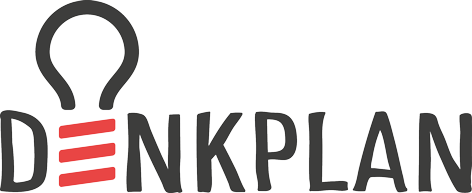Our approach enables you to simplify complex structures in organizations, derive areas for improvement, and target goals through specific work packages. We provide you with collaborative tools that you can adapt to your company’s framework conditions to promote the flow from “abstract” strategy to tangible implementation.
Thought planning connects three levels:
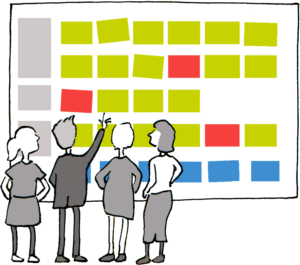
The strategic impact map
The ImpactMap is a comprehensive picture of your organization. It visualizes the complexity of your department or your company in a simple and understandable way. This is how the Impact Map works:
- Together with your colleagues, record your performance elements.
- Identify connections and dependencies.
- Make your different perspectives transparent.
- Discover ambiguities, potentials, and weaknesses, and derive areas for action for progress and improvement.
The Portfolio Board
The Portfolio Board is the cockpit of your action areas and the central control instrument for your investments in initiatives, projects, and ventures. Here you keep an eye on the big picture, align your activities with your goals, and prioritize them according to their value contribution. This is how the Portfolio Board works:
- Describe what you want to change with each action area.
- Develop initiatives within the action areas and put on a timeline when what should be finished.
- Coordinate dependencies, capacities, and resources across all action areas. The motto is: “A little finished is much better than a lot in progress”.
- Continuously adapt the Portfolio Board to your current state of knowledge.
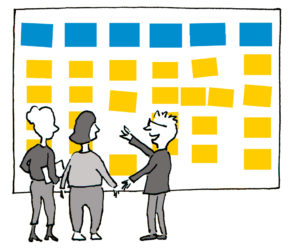
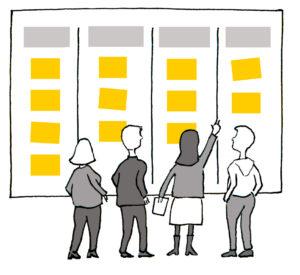
The Portfolio Kanban
With the Portfolio Kanban, you keep track of the status and progress of initiatives. The purpose of Portfolio Kanban is to optimize the “flow” – the implementation time and quality of work – and to quickly react to bottlenecks, changes, and new requirements. This is how Portfolio Kanban works:
- Create a Kanban structure that best fits your framework conditions.
- Map your initiatives and their maturity level in the Kanban.
- Fine-tune priorities, dependencies, and capacities, and let participants pull and implement their work.
- Synchronize the progress in implementation with the Portfolio Board.
Employees as stakeholders
At all three levels, Thought Planning (Denkplan) involves employees in strategy work. As participants, they help shape initiatives for change and understand the meaningfulness of their tasks. In this way, all participants have an active role in strategy work, from situation analysis to formulating the need for action to developing solutions.

This is Denkplan – Your toolkit for strategy work – clear – practical – flexible. Interested in trying it out?

WHY
We believe that transparency, consistency, and flexibility make companies successful.
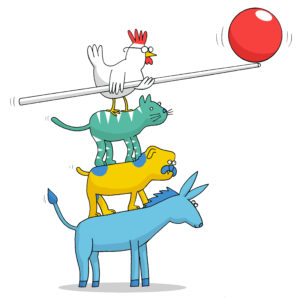
HOW
A visual, simple system for corporate planning with minimal bureaucracy: Transparent, agile, iterative, communicative, consensus and feedback oriented.
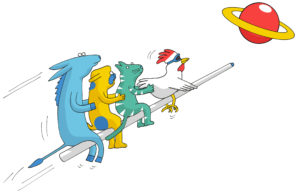
WHAT
Simplicity of methodology and tools, clever feedback mechanisms, and consistency ensure broad support for the strategy within the company.
Workshops
Discover the power of the Denkplan method in our workshops and mini-events!

Become a DENKPLAN® Consultant: Discover adaptive strategy development in our workshop! Expand your consulting services with collaborative methods and learn to visualize, concretize, and implement corporate strategies down to the team level in disruptive times.
Next dates: upon request
Inspiration from Denkplan
Denkplan is inspired by existing methods and concepts. In the strategic business context, Denkplan has adopted, combined, enriched, and further developed these methods and concepts into something new. The most important ones are:
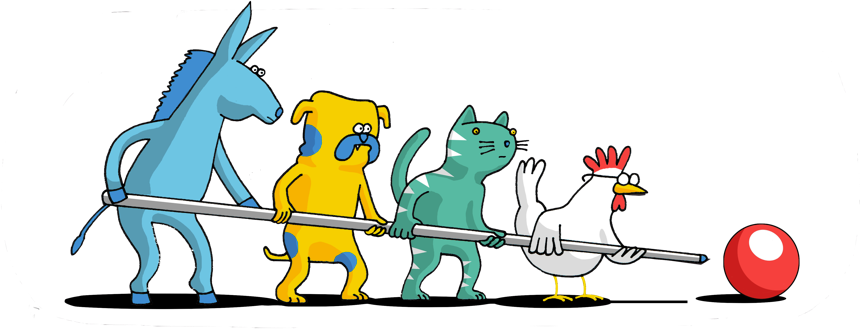
SokratesMapConcept from Sokrates Group
The SokratesMapConcept (SMC) was developed by Thomas Braun. According to Thomas Braun’s understanding, the SMC is the initial method in the canon of General Morphology methods. It forms a visual communication basis that makes changes in common understanding visible and controllable. If you would like to learn about the benefits of the SokratesMapConcept, we recommend working with the SokratesGroup.
Morphological Box
The morphological box is a systematic approach to tackle complicated and complex issues in a structured manner and to develop, identify, and transfer topics into new solution spaces.

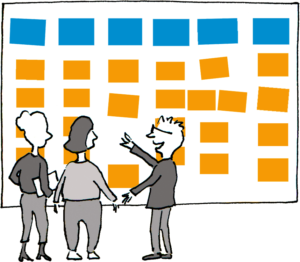
User Story Mapping von Jeff Patton
User Story Mapping is a methodology developed by Jeff Patton. In a product development process, it helps to create transparency and a shared understanding of the problem to be solved and the product to be developed. We recommend the book “User Story Mapping” by Jeff Patton for this purpose.
Kanban
Kanban is a methodology to make process, value stream, or workflow transparent. It was developed in Japan by the Toyota Motor Corporation. On the topic of Kanban, we would like to mention the book “Kanban” by David J. Anderson.


Lean agile values and principles
Lean agile values and principles form the mental foundation on which Denkplan is built. In addition, well-structured information is available here.

